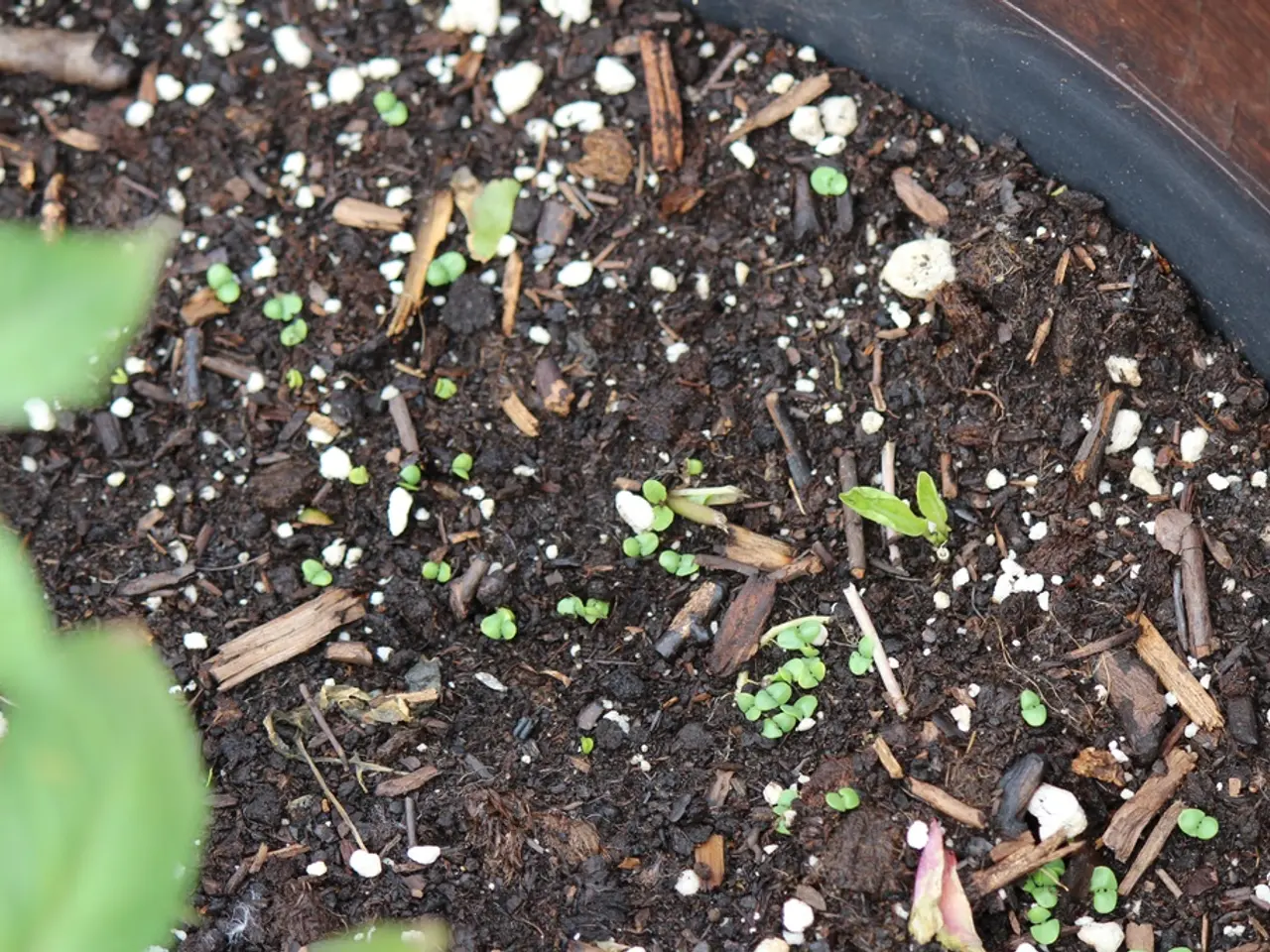Should I Modify Soil Before Planting? A Dilemma Examined
In the world of gardening, clay soil can sometimes pose a challenge due to its dense and poorly-draining nature. However, with a few effective strategies, it's possible to transform this soil into a productive growing medium.
Adding Organic Matter
One of the key strategies for improving clay soil is the regular addition of organic matter such as compost or well-rotted manure. This improves soil structure, increases aeration, and reduces compaction. Compost makes clay soil looser and healthier by changing its texture and promoting beneficial microbial activity [1][5]. Aim for 2-4 inches of organic matter annually to achieve the goal of 5%-10% organic matter in your vegetable and flower beds [4].
Improving Drainage
Clay soil's tendency to hold too much water can lead to waterlogging, which is harmful to plant root health. Creating raised beds or amending the soil with coarse materials can help prevent this issue. Enhanced drainage is vital for maintaining a healthy garden [1].
Using Gypsum
Gypsum can enhance soil structure by helping to aggregate clay particles, improving aeration and water penetration without altering pH significantly [1].
Planting Cover Crops
Cover crops like crimson clover, rye, or buckwheat introduce roots that penetrate clay layers, creating natural channels for air and water. When these crops decompose, they add organic matter and help loosen and aerate compacted soil [3].
Avoiding Soil Compaction
Limiting foot traffic on wet clay soils and working the soil only when it's crumbly but not too wet or dry preserves soil structure [3][5].
Fostering Soil Biology and Aeration
Biological treatments and non-invasive methods such as air excavation or deep root injections can break clay compaction and rebuild healthy soil ecosystems [2].
Testing your soil to understand its pH, nutrient content, and texture can guide targeted amendments and avoid unnecessary treatments [1].
Mulching and Fertilizing
Mulch protects the soil from compaction in clay soil. If you're looking to improve your soil, remove mulch, spread an inch of compost over the area, and then move the mulch back in place [6].
The best time to fertilize depends on the type of plants you are growing. For edible crops, fertilizer is typically applied in the spring before planting. For perennial flowering plants, fertilize before growth begins in the spring, but after the risk of frost has passed [7].
Specialty fertilizers are designed for specific plants or growth stages. Fertilizers are available in organic and inorganic forms, with slow-release options providing a consistent supply of nutrients without frequent applications [8].
Incorporate 2-4 inches of compost into new plant beds that are high in clay or have thin topsoil [9]. Over time, this will improve the soil structure and attract microorganisms.
By implementing these strategies, you can transform dense, poorly-draining clay into a thriving garden that supports a variety of plants. Happy gardening!
[1] University of Illinois Extension. (2021). Clay Soil: The Pros and Cons. Retrieved from https://extension.illinois.edu/soil/clay-soil-pros-and-cons/ [2] University of Maryland Extension. (2021). Soil Testing and Amending Soils. Retrieved from https://extension.umd.edu/hgic/soil-testing-and-amending-soils [3] Texas A&M AgriLife Extension. (2021). Improving Clay Soil for Gardening. Retrieved from https://aggie-horticulture.tamu.edu/galveston/lawn/clay-soil/ [4] University of California Agriculture and Natural Resources. (2021). Soil Organic Matter. Retrieved from https://ucanr.edu/sites/Soils/Soil_Organic_Matter/ [5] Oregon State University Extension Service. (2021). Gardening with Clay Soil. Retrieved from https://extension.oregonstate.edu/gardening/gardening-clay-soil [6] University of Missouri Extension. (2021). Mulch. Retrieved from https://extension.missouri.edu/publications/G9399 [7] University of Vermont Extension. (2021). Fertilizing Your Garden. Retrieved from https://pss.uvm.edu/factsheets/fertilizing-your-garden/ [8] University of Florida IFAS Extension. (2021). Organic Fertilizers. Retrieved from https://edis.ifas.ufl.edu/pdffiles/SS/SS44800.pdf [9] University of Maine Cooperative Extension. (2021). Soil Amendments. Retrieved from https://extension.umaine.edu/publications/5052e/
Improved soil health can be achieved in home-and-garden landscapes through the addition of organic matter like compost or well-rotted manure, which enhances soil structure, increases aeration, and reduces compaction. To maintain a healthy garden, it's crucial to ensure good drainage, either by creating raised beds or amending the soil with coarse materials.




